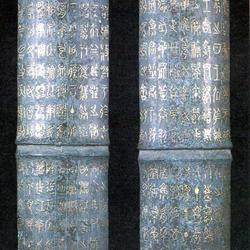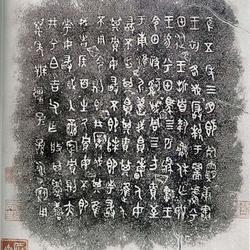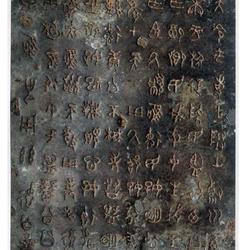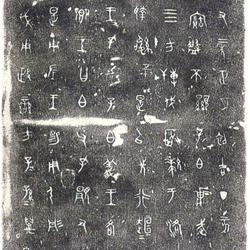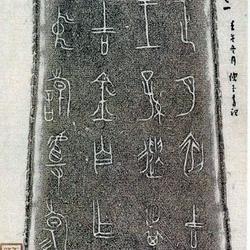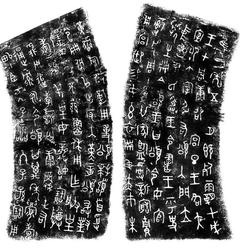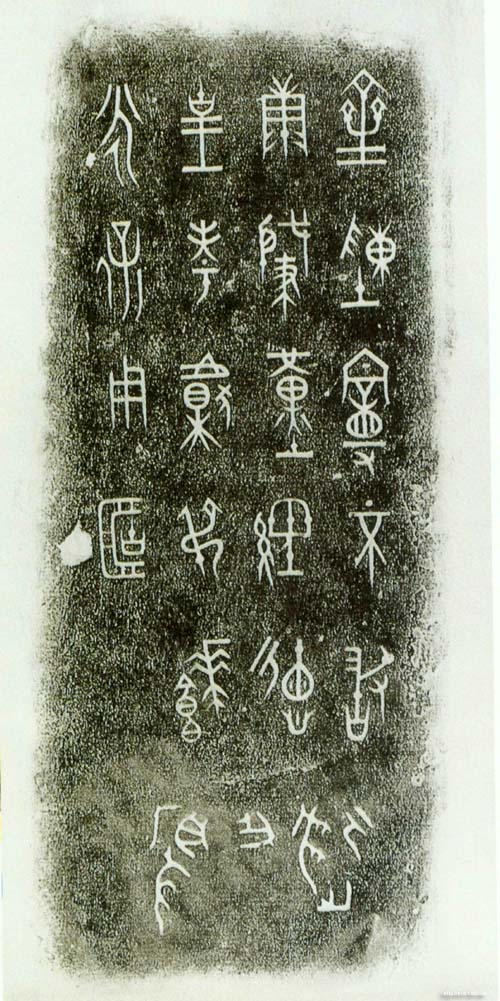
Warring States Period, Qi State (475-22 BC) Bronze Inscriptions, 4 lines, 22 characters, Shanghai Museum
Interpretation: Qi Chenman dare not escape
Kang Zhaojin (qin) Jing Dezha (author)
Emperor Kao Xian Shu**
Yongbao Yan
"Chen Man Yu" records the situation of Chen Man's examination of the utensils made by his uncle for the emperor.
As bronze inscriptions developed into the Warring States Period, the style and brushwork of bronze inscriptions changed, changing the round and thick style of bronze inscriptions in the Western Zhou Dynasty. The characters in "Chen Man Yun" are vertically styled. Judging from the neatness of the strokes and the even distribution of character spacing and line spacing, it has taken the prototype of Xiaozhuan style. Although Xiaozhuan inherits the tradition of Qin scripts (such as "Qin Gonggui", "Shiguwen", etc.), it will undoubtedly be influenced by Eastern scripts such as "Chen Manfu".
The calligraphy of "Chen Manyan" is neat, beautiful and elegant, which is very different from the majestic and solemn bronze inscriptions of the Western Zhou Dynasty. Judging from the shape of the characters and the style of calligraphy, there are signs of transition to Xiaozhuan. It provides physical data for studying the transition from bronze inscriptions to Xiaozhuan.
11 cm high, 19.4 cm long mouth, 31 cm wide mouth.
"簠" is a utensil used to hold millet, millet, rice, beam and other food during sacrifices and banquets. This device has a straight mouth, flat lips, folded walls, a shallow abdomen, ears on both sides of the abdomen, and high feet that are turned outward for radial support. The lower edge of the mouth and abdomen are decorated with different forms of rolling dragon patterns. The inscription on the inner bottom of the abdomen contains four lines and twenty-two characters, describing that Chen Man of Qi State did not dare to live in peace and contentment, but worked diligently and performed his duties well, and also tested the instruments made by his uncle for him. This vessel is self-inscribed as "廐簠". The last word of the inscription should be the continuation of the third line. "廐簠" is the alias of Zheng Yun. The inscription is meticulous and meticulous. The brush strokes are vertical and horizontal, and the structure is changeable, which is another style of ancient Chinese writing in the early Warring States Period.
Images and text in this edition are provided by Kejia
Selected from "The Complete Collection of Chinese Art"

